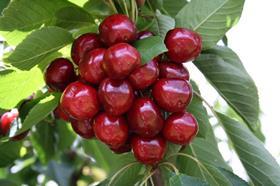
Having won direct access to mainland China - and its 1.3bn consumers – Tasmania’s cherry industry is now coming to grips with the realities of trading into Asia’s most populated market.
The island-state sent over 70 tonnes to China by airfreight at the tail end of last season, after becoming the first Australian growing region to have its fruit fly-free status recognised by Chinese officials.But as the industry prepares to ramp up export volumes in its first full season of market access, challenges continue to arise.
“Our two main competitors, New Zealand and Chile, both have free trade agreements in place with China, and we don’t,” said Howard Hansen, managing director of Huon Valley-based grower Hansen Orchards.“It means we are significantly disadvantaged because we have to pay substantial duties on our cherries to get it into the market, which reduces returns down the supply chain.”
Consequently, Tasmanian growers have been reluctant to make China their sole focus.With a reduced production volume coming out of mainland Australia, and Spring frosts cutting significantly into a bumper crop initially forecast out of Chile, the Tasmanian industry has openings in domestic and international markets.
“China’s emergence as a market is going to command a fair portion of our business but we also see the importance of having a diversified portfolio,” explained Lucy Gregg of Derwent Valley-based grower-packer-marketer Reid Fruits.“Our increasing production volumes align perfectly with market access in China, as we can develop this market without neglecting existing customers.”
South Korea is a market Tasmania is looking to leverage opportunities in after the Australian government signed a new free trade agreement (FTA) with the Asian nation in December.
“We remain the only Australian state with access into South Korea for cherries, and with the FTA now in place we are in a far more competitive position to grow our presence in this market,” Hansen said.



